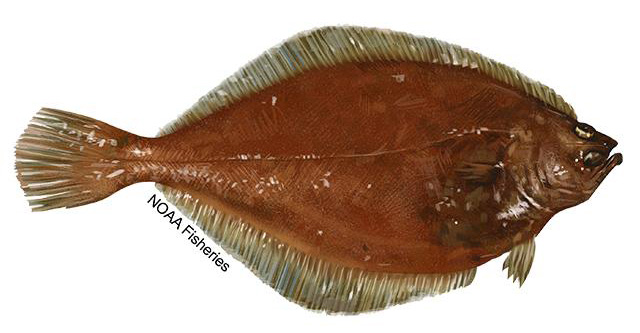Part 10: Active Management: Setting Harvest Limits in an FMP
Allocation
When the harvest of a stock is restricted by management, different groups of fishers that use that stock often find themselves in conflict. The conflict occurs because each group realizes it could harvest more fish if the other group did not exist or if the other group was restricted even further. These disagreements occur among different kinds of commercial fishers or between commercial and recreational fishers.
The division of how much fish each group gets to harvest is called allocation. From a strictly biological viewpoint, there is no fair or unfair allocation. It does not make any difference to the stock who catches the fish as long as the total allowable catch is not exceeded.
Types of Recreational Fishers
Depending on the fishery, recreational harvest allocations may be further subdivided based on the type of recreational fishing. There may be private anglers, headboats (where the vessel charges per passenger/fisher) or charter boats (where the boat is rented by a single entity). Party boat is another word for headboat.
Instead, allocation is a political, social, and economic decision made by elected or appointed officials. In an attempt to be fair, allocation decisions are often made on the basis of historical catches. If Group A normally catches 60 percent of the landings and Group B catches 40 percent, then future fish harvests are usually allocated on that basis. Disputes often arise over the accuracy of historical records, particularly when poorly documented fisheries are involved. Additionally, using historical harvests as a basis prevents newer operations from entering the fishery as their share of allocated harvests may not cover costs.
The determinations of Total Allowable Catch (a biological total) and allocation amounts (a socio-economic one) have not always been separated. In federal fishery management, fishery biologists determine Total Allowable Catch (TAC) based on the scientific information available. Then the Fishery Management Councils (combination of managers and appointees) make the allocation decisions.
Allocation between Recreational and Commercial
As one example, commercial fishers challenged the re-allocation between recreational and commercial fishers for red snapper in the Gulf of Mexico. Prior to the reallocation (via an FMP amendment), commercial fishing was allocated 51 percent of the TAC and recreational 49 percent. The amendment reduced commercial’s share to 48.5 percent, and increased the recreational allocation to 51.5 percent. This was based on a different methodology for calculating harvests because, according to NMFS, historical recreational harvests had been miscalculated previously. The court held that the reallocation violated National Standard 4 in that it was not “fair and equitable to all [] fishermen.” And the allocation was changed back. Guindon v. Pritzker, 240 F.3d 181 (D.D.C. 2017).
Management Tools for Allocation
Management tools can be described as direct or indirect, depending on how they impact fisheries. Direct tools directly limit fishing effort, such as setting fixed quotas, or placing per-day or per-trip limits on fish by weight. Indirect tools change how fishing is conducted to limit the amount of fish caught. Some examples of indirect tools are closures (rolling or permanent) of fishing areas, requiring a minimum size limit, limiting vessels’ days-at-sea, creating special access programs, and modifying fish gear. Some examples of gear modifications include increasing the mesh size of nets or restricting the use of types of gear.
 American Plaice
American Plaice
Precautionary Approach
Although the term “precautionary approach” does not appear in the Magnuson-Stevens Act, it is a common standard in international conservation. A precautionary approach recognizes that where uncertainty exists regarding whether a resource is being exploited, the appropriate action is to act conservatively to reduce the strain on the resource until more data can be gained. NMFS uses the term in guidance provided to the Councils. Councils may exercise a precautionary approach when the status of a fish stock is uncertain; it is safer to harvest a lesser amount of fish than the theoretical maximum.
An example of how the precautionary approach shows up in FMPs is the use of the term “management uncertainty.” Where there is management uncertainty, the adjustment to harvest levels is to be more conservative, typically by creating a buffer between the catch a fishery might withstand and the one allowed.
Harvest Levels: ABC, ACL, and AMs
Determining the maximum sustainable yield (MSY) allows biologists to set the Acceptable Biological Catch (ABC), a figure based on the amount of fish caught during a year that accounts for scientific uncertainty in the MSY. The ABC is set lower than the MSY. It frequently is set in pounds per year. For example, the ABC for bottomfish off American Samoa was 101,000 lbs. in 2014. The Scientific and Statistical Committee of a Council sets the ABC.
Despite what is suggested by its name, the ABC is not the same as how many fish may be caught in a fishery under an FMP. Instead, the plan sets an Annual Catch Limit (ACL) that is lower than the ABC, providing another buffer between the amount of fish harvested and the MSY. ACLs were required by the 2007 amendments to the Magnuson-Stevens Act, which also required setting Accountability Measures (AM) to be imposed when catch limits were exceeded. The law required FMPs to include both by 2011. The ACL is identified by number or weight of fish.
The Magnuson-Stevens Act regulations (50 C.F.R. 600.310(g)(3)) establish that where ACLs are exceeded, an AM should reduce the ACLs in the next fishing year by the full amount that harvests went over the catch limit, unless the best scientific information available shows that a smaller adjustment will mitigate the effects of the overages. AMs are built into an FMP for when ACL may be exceeded and authorize certain management changes, such as by altering gear, quotas, seasons, or catch limits.
Some fisheries, such as the Gulf Reef Recreational Fishery for Red Snapper, also impose an Annual Catch Target (ACT). The ACT is the maximum amount of fish that may be harvested. According to NOAA, the ACT is lower than the ACL to allow for “management uncertainty.” ACTs are used in fisheries where fishing harvests routinely exceed the ACL to serve as a precautionary measure to prevent overfishing. The ACT provides another buffer based on whether catch limits were exceeded in previous seasons.
Example of ACT
In the Gulf of Mexico red snapper stock for-hire component, the 2019 ACT was nine percent lower than the ACL. In 2018, the ACT was 20 percent below the ACL. 85 Fed. Reg. 9684 (Feb. 20, 2020).
FMPs incorporate other terms to define harvest limits, although not all of the terms will be used in each fishery. Here are some other examples:
- Annual Catch Entitlement (ACE): A share of the ACL that is set aside for specific categories of users, such as a state-operated permit bank (in the case of the Northeast multispecies fishery) 50 C.F.R. § 648.2;
- Annual Projected Landings: A total of projected landings combining data from different fleets;
- Harvest Guideline – a numerical quantity less than or equal to ACL;
- Total Allowable Catch (TAC) – a quantity based on the biological health of the stock;
- Total Allowable Landings – a quantity based on how much of the catch is “landed” or brought to shore.
The Difference Between Catch and Landings
There is a difference between catch and landings. Catch refers to when the fish are brought onto the boat. Landings refers to when the fish are brought to shore. Some fish may not be brought whole to land, meaning the catch weight would be significantly higher than the landing weight. FMPs describe whether landing or catch limits are set. Sometimes, a “gutted weight” is used to determine catch limits.
Days-at-Sea (DAS)
Days-at-sea (DAS) is one method used by FMPs to limit harvests. It does so by restricting the number of days (per 24-hour period) each year that a vessel is away from port, allowing it to fish for, possess, or land regulated species only during that time. (50 C.F.R. 648.2).
Harvests may also be limited under a DAS program by possession and landing limits. For example, at one time the Atlantic Sea Scallop fishery categorized vessels as full-time, part-time, or occasional and allocated each category of vessel a DAS based on the ACT (50 C.F.R. 648.53). In contrast, all monkfish limited access vessels received 46 DAS each year (50 C.F.R. 648.92). Typically, DAS are transferrable, and a vessel may be allowed to carry over a certain number of days to the next year or get credit for cancelled days.
 Atlantic Scallop
Atlantic Scallop
Sectors
Another method to allocate harvest levels to ensure sustainable fisheries is to divide vessels into sectors. NMFS views the sector program as distinct from DAS or a quota. It defined a sector as “a group of vessels that have voluntarily signed a contract and agree to certain fishing restrictions, and that have been allocated a portion of the TAC of a species, or an allocation of DAS.” According to the agency, dividing a fishery into sectors is more flexible compared to a quota or days-at-sea approach because input/effort restrictions are lifted and permit holders can allocate the Annual Catch Entitlement (ACE) however they prefer. Although not defined in the MSA, the statute excludes “sectors” from having a two-thirds approval when setting allocations, as is necessary for IFQs or LAPPs, 16 U.S.C. § 1853a(c)(6)(D)(vi).
For example, at the time the 2007 MSA Amendments were being negotiated in Congress, the New England FMC had established a sector program for each multispecies fishery permit holder. Each permittee was allocated a “potential sector contribution” (PSC) based on that vessel’s landings history as compared to total landings during that time for each stock. PSC is used to figure out catch limits, but is not a catch limit by itself. The aggregate PSCs of permit holders in a sector constitute the sector’s ACE, which is a proportion of the total Annual Catch Limit (ACL) for the entire commercial fishing sector. In other words, it is a cap on annual harvests. ACEs may be traded between sectors. The New England groundfish FMP allowed fishers to select their own groups or sectors. Each sector would receive its own allocation of either DAS or TAC. Sectors comply with reporting requirements to ensure they do not exceed their ACE.
« Go to Part 9 | Part 10: Active Management: Setting Harvest Limits in an FMP | Go to Part 11 »
